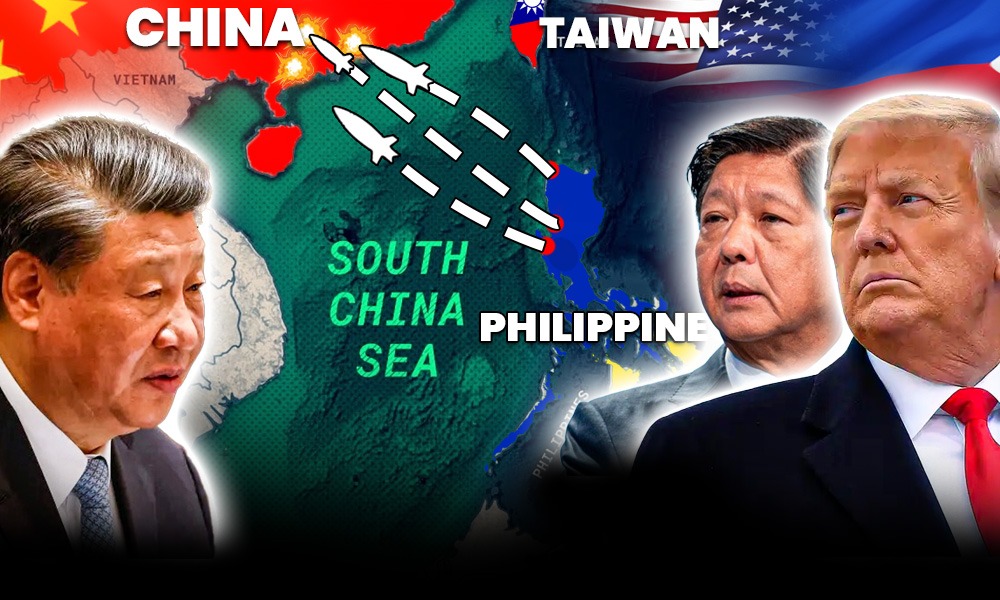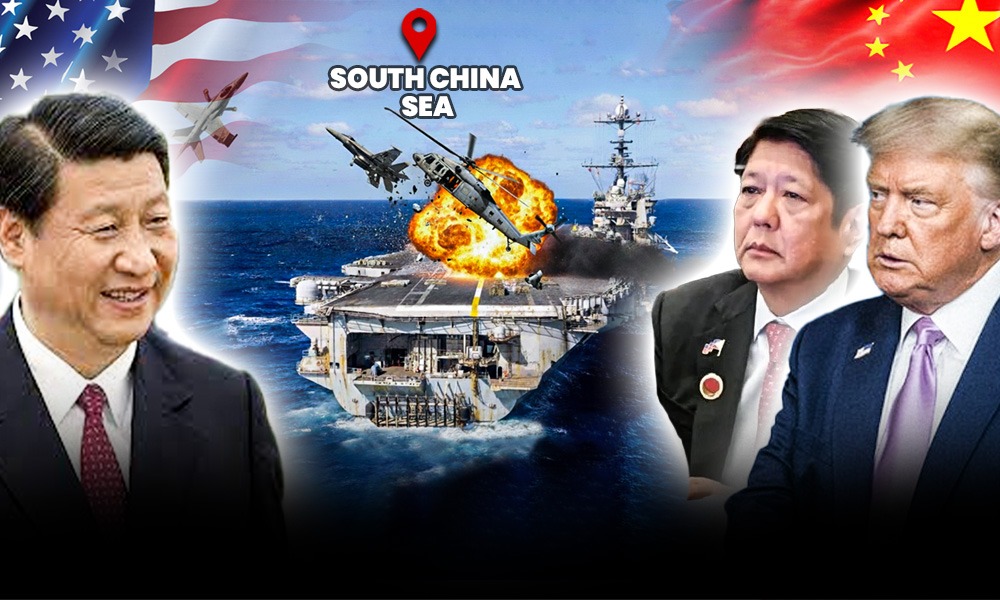Throughout history, naval dominance has played a crucial role in shaping the geopolitical landscape, with the British Royal Navy’s supremacy during the 19th century serving as a prime example. By controlling key sea routes and ensuring maritime security, the British Empire expanded its influence, protected its trade interests, and maintained global stability. In Southeast Asia, the maritime dynamics are similarly shaped by the diverse naval capabilities and strategic priorities of its nations. From Indonesia’s formidable naval force safeguarding its vast archipelago to Vietnam’s rapidly modernizing navy aimed at deterring regional threats, each country navigates unique geopolitical challenges. The Philippines fortifies its alliances amid rising tensions in the South China Sea, while Thailand enhances its naval assets to address non-state challenges. Singapore has an advanced and self-reliant navy, and Malaysia strengthens its maritime security through regional cooperation. Myanmar, despite limited capabilities, focuses on developing its naval and coast guard forces, and Cambodia modernizes its naval base in collaboration with China. Brunei, with a smaller fleet, prioritizes coastal defense and regional security initiatives. These varied approaches highlight the critical importance of maritime security and defense in the region’s stability and prosperity.
Let’s discuss, who has the strongest navy in South East Asia?
Indonesia: The Maritime Giant
Indonesia has a formidable naval force crucial for safeguarding its vast archipelago and exerting influence in the surrounding regions. Positioned along critical sea routes, Indonesia plays a pivotal role in global maritime security. The Indonesian Navy’s prime location in the Indo-Pacific, combined with its modernization efforts to enhance capabilities, a large fleet of warships, submarines, and patrol vessels, and active participation in regional security initiatives, signifies its strengths. The Indonesian Navy operates eight submarines, including the Nagapasa-class and Cakra-class vessels. Additionally, their surface fleet comprises frigates, corvettes, and patrol boats. One of the most difficult and challenging geopolitical issue for Indonesia is the South China Sea conflict. Indonesia’s approach to balancing territorial claims in the South China Sea is strategic. To ensure sustainable naval development, Indonesia has entered into an agreement with the French Naval Group and domestic company PT PAL to acquire two Scorpene-class submarines. The Indonesian Navy aims to expand its fleet to a total of 12 submarines.
Vietnam: Rising Naval Power
Having a long coastline facing the South China Sea, Vietnam stands among the Southeast Asian nations with the fastest-growing militaries and defense budget. Vietnam aims to modernize its defense capabilities to deter regional threats, anticipating a cumulative defense budget of $46 billion between 2025 and 2029. This aligns with the broader trend among Southeast Asian countries, which are boosting their defense budget to strengthen territorial sovereignty.
With a coastline stretching 2,000 miles along the South China Sea and significant GDP contributions from the maritime industry, maritime concerns are a top defense priority for Vietnam. In 2011, Vietnam released a comprehensive marine plan for 2011 to 2020, emphasizing maritime sovereignty and industry as crucial pillars of national security. By 2018, Resolution 36 highlighted the need for sustainable development of the maritime sector in line with national security, making it a priority for Vietnam’s economic development from 2030 to 2045.
A key aspect of the growing defense ties between the United States and Vietnam is maritime security. Between 2017 and 2023, the U.S. State Department provided approximately $104 million in security assistance to Vietnam through the Foreign Military Financing (FMF) program to increase its marine security and law enforcement capacities. In 2018, FMF allocated an additional $81.5 million to Vietnam as part of the U.S. Indo-Pacific Strategy. Prominent examples of bilateral maritime security cooperation include U.S. port visits to Vietnam and joint naval exercises.
Vietnam’s cautious approach to strengthening ties with the United States aims to maintain stable and peaceful relationship with its neighbours. Stronger defense relations between the U.S. and Vietnam may provoke China, potentially leading to punitive actions against Vietnam. Consequently, Hanoi has sought to reassure Beijing that its Comprehensive Strategic Partnership (CSP) with Washington is not a security alliance against China. In recent high-level meetings between Chinese and Vietnamese officials, Vietnam emphasized its positive bilateral relations with China and its “Four No’s” defense policy.
Vietnam has effectively managed its great power relations by balancing assurance, hedging, and deterrence, as demonstrated by recent constructive engagements with both China and the United States. However, the evolving geopolitical landscape will present challenges, requiring Vietnam to continuously adapt and recalibrate its strategies.
Philippines: Striving for Modernization
Within the Philippines’ 200-mile Exclusive Economic Zone (EEZ), the Second Thomas Shoal of the Spratly Islands remains a flashpoint in the nation’s ongoing conflict with China. To assert its claims in what it calls the West Philippine Sea, the Philippines intentionally grounded the BRP Sierra Madre in 1999. Since then, this vessel has become a symbol of the territorial dispute, with the Philippine Coast Guard conducting regular resupply missions to support military personnel stationed there. In 2023, these missions faced increasing interference from Chinese Coast Guard vessels, intensifying regional tensions.
Amid rising hostilities, the Philippines has increased its alliances with other Indo-Pacific nations. President Marcos has signed agreements with the United States to expand arms exports, joint training exercises, and base access. The Mutual Defense Treaty (MDT) between the United States and the Philippines, which ensures mutual support in case of armed attacks, was reaffirmed by U.S. Secretary of Defense Lloyd Austin at multiple instances in 2024. Additionally, Japan has strengthened its role in regional security by providing military hardware to the Philippines.
The BRP Sierra Madre, grounded at Second Thomas Shoal, symbolizes the Philippines’ commitment to asserting its territorial claims. Despite its age and challenging conditions, it remains a strategic outpost for the Philippine Coast Guard. Regular resupply missions by the Philippine Coast Guard are crucial for maintaining the military presence on the BRP Sierra Madre, demonstrating the nation’s resolve to uphold its sovereignty. Chinese Coast Guard vessels have increasingly interfered with these missions, using risky tactics that heighten tensions and increase the sensitivity of territorial disputes in the South China Sea.
Other ASEAN States
Thailand: Strengthening Naval Capabilities
Thailand aims to enhance its maritime knowledge, reinforce deterrence, and better restrict unlawful marine operations by modernizing its naval assets. Already possessing one of the most powerful navies in Southeast Asia, Thailand continues to acquire advanced naval warfare capabilities from a variety of foreign partners, though the current capacity still falls short of government aspirations. To reduce reliance on imports amid global uncertainty, Thailand is concurrently developing a domestic shipbuilding sector.
As a non-claimant state in the South China Sea with friendly relations with all major nations, Thailand does not face an existential threat from direct conflict with a great power. However, the potential for an attack cannot be entirely dismissed, given the constantly evolving non-state challenges it faces. Strong naval presences on both national coasts are crucial to ensure maximum security and resilience. The absence of a maritime shortcut between the Andaman Sea and the Gulf of Thailand further limits Thailand’s defense flexibility, making robust coastal defenses even more essential.
Singapore: Advanced and Self-Reliant Naval Force
Singapore’s Navy, while purchasing missiles, torpedoes, and submarines from overseas, primarily relies on domestic businesses to meet its needs. Most of the fleet, including platform landing ships, multipurpose auxiliary vessels, and offshore patrol boats, is built by regional companies. The Republic of Singapore Navy (RSN) commands a highly developed naval force with two Challenger-class (Sjöormen-class) and two Archer-class (Västergotland-class) submarines. As part of its broader initiative to enhance fleet flexibility and incorporate unmanned technologies, Singapore has engaged ST Engineering to modernize its Formidable-class frigates. This strategic approach ensures that Singapore maintains a robust and self-reliant naval force capable of addressing contemporary maritime challenges.
Malaysia: Strengthening Maritime Security
As a maritime nation, Malaysia places great importance on maritime security, serving as a crucial hub for global trade and commerce due to its strategic location in Southeast Asia. This advantageous position, however, also exposes the country to various maritime security threats. In response, Malaysia has made significant investments to enhance its naval power, focusing on acquiring advanced and modern warships. The Royal Malaysian Navy (RMN) has added sophisticated vessels to its fleet, including Offshore Patrol Vessels (OPVs), Littoral Mission Ships (LMS), and Littoral Combat Ships (LCS), all designed to efficiently monitor and protect Malaysia’s waterways. Equipped with advanced radar and surveillance systems, these ships are capable of detecting and tracking suspicious vessels in the area.
To further enhance its maritime security capabilities, Malaysia actively participates in regional and global maritime security cooperation. The nation engages in numerous cooperative maritime exercises with countries such as the United States, Australia, and Singapore. Additionally, the RMN conducts joint patrols with foreign fleets to improve its capabilities and gain a deeper understanding of the regional maritime security landscape. Malaysia also takes part in the Malacca Straits Patrol (MSP), a collaborative initiative with Indonesia and Singapore aimed at enhancing maritime security in the vital Malacca Strait.
Myanmar: Developing Naval and Coast Guard Capabilities
Myanmar, a military-run country in Southeast Asia, has limited naval capabilities. Recently, it hosted its first-ever cooperative naval drill with Russia, a significant ally and supplier of weaponry to Myanmar’s military regime, which took power in February 2021 after overthrowing Aung San Suu Kyi’s democratic administration. The Myanmar Coast Guard is trying to play a crucial role in protecting the country’s maritime interests. It operates in a constabulary manner, assisting with search and rescue operations, promoting marine environmental conservation, and monitoring various activities both above and below the water in Myanmar’s waters.
The foundation for the Coast Guard was laid by the Aung San Suu Kyi-led NLD government in 2018. Now under the Ministry of Defense, the Myanmar Coast Guard collaborates closely with the Myanmar Police Force, the Ministry of National Planning and Economic Development, the Ministry of Livestock, Fisheries, and Rural Development, and the Myanmar Navy. Its mission is to protect Myanmar’s territorial seas, which encompass 23,070 square kilometers and approximately 1,000 islands, as well as its 1,930 kilometers of coastline. Through these efforts, Myanmar aims to enhance its maritime security and safeguard its extensive maritime domain.
Cambodia: Maritime Developments
Although Cambodia is not landlocked, it has limited coastline along the Gulf of Thailand. This coastal area is crucial for its maritime interests. In a significant move towards enhancing its maritime capabilities, the official “modernization” of the Ream Naval Base was marked by a ceremony attended by the Chinese Ambassador to Cambodia, Wang Wentian, and Cambodia’s Defense Minister, along with other officials. During the event, they symbolically turned over shovels full of soil, signaling the start of this strategic development. This modernization effort reflects Cambodia’s growing cooperation with China in bolstering its naval infrastructure.
Brunei: Limited Naval Capabilities
The Royal Brunei Navy (RBN) operates with a small fleet of patrol boats and coastal defense units. Brunei’s limited naval capacity is partly due to its small size and economic focus on other sectors, particularly energy, such as oil and gas. As a result, the nation prioritizes investments in these lucrative industries over significant naval expansion. Despite its modest maritime force, Brunei maintains a focus on safeguarding its coastal waters and supporting regional security initiatives.
End Note
In examining the naval capabilities and strategic maritime priorities of ASEAN nations, it becomes evident that each country adopts unique approaches tailored to its geographical and geopolitical context. Indonesia stands out as a maritime giant with a formidable fleet, while Vietnam rapidly modernizes to enhance its naval power. The Philippines navigates complex territorial disputes with a focus on alliances, Thailand bolsters its capabilities to address non-state threats, and Singapore maintains a highly advanced and self-reliant navy. Malaysia emphasizes regional cooperation, Myanmar develops its nascent naval forces, Cambodia modernizes with Chinese support, and Brunei prioritizes coastal defense. Together, these varied strategies highlight the critical importance of maritime security in ensuring regional stability and economic prosperity in Southeast Asia.



